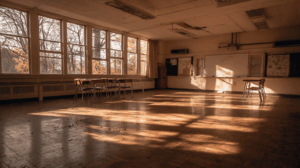
Present Simple Tense 1
English Blogs “Let’s Learn, Explore, and Connect to the World” Present Simple Tense 1 I. Introduction to the Present Simple Tense in English Mastering the



 Mastering the art of forming questions and negatives is a crucial aspect of using the present simple tense effectively. This section will guide you through the rules and nuances of constructing these types of sentences.
Mastering the art of forming questions and negatives is a crucial aspect of using the present simple tense effectively. This section will guide you through the rules and nuances of constructing these types of sentences.
Forming Questions
To form questions in the present simple tense, we typically use the auxiliary verbs ‘do’ or ‘does’. The structure is: do/does + subject + base form of the verb.
Examples:
Do you like coffee? (For ‘you’, ‘we’, ‘they’)

Does he play tennis? (For ‘he’, ‘she’, ‘it’)
It’s essential to choose the correct form of ‘do’ based on the subject. ‘Do’ is used with plural subjects and ‘I/you’, while ‘does’ is used with singular third-person subjects (he, she, it).

For yes/no questions, where the answer is either ‘yes’ or ‘no’, this structure is particularly common. It’s also customary to give short answers using the auxiliary verb.
Examples:

Question: Do they live in London?
Short Answer: Yes, they do. / No, they don’t.

Question: Does he work here?
Short Answer: Yes, he does. / No, he doesn’t.

Negative sentences in the present simple are formed by adding ‘do not’ (don’t) or ‘does not’ (doesn’t) before the base verb.
Examples:

I don’t understand this chapter. (For ‘I’, ‘you’, ‘we’, ‘they’)

He doesn’t speak Japanese. (For ‘he’, ‘she’, ‘it’)
Remember, the main verb remains in its base form after ‘don’t’ or ‘doesn’t’.

A common mistake learners make is using the wrong auxiliary verb (‘do’ or ‘does’) or adding an -s to the main verb in negative and question forms when it’s not needed.

Incorrect: Does she likes ice cream?
Correct: Does she like ice cream?

Incorrect: They don’t goes to school on Sundays.
Correct: They don’t go to school on Sundays.

Forming questions and negatives correctly in the present simple tense is fundamental for clear communication. This requires not only understanding the basic structure but also practicing to avoid common errors. The next step in mastering the present simple tense is to apply these rules in everyday conversations and written communications.

English Blogs “Let’s Learn, Explore, and Connect to the World” Present Simple Tense 1 I. Introduction to the Present Simple Tense in English Mastering the

English Blogs “Let’s Learn, Explore, and Connect to the World” Present Simple Tense 2 II. Understanding the Present Simple Tense Definition and Structure At its

Explore the world confidently with ‘Travel English’ by Allison Kate, a comic-style guide full of essential conversations and tips for every traveler. Speak English with ease in airports, hotels, and more!



